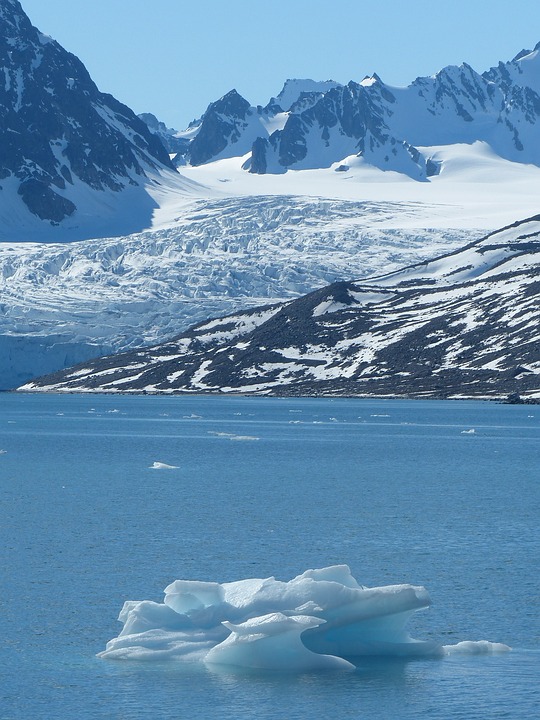The Arctic Ocean: A Vital Ecosystem Under Threat
The Arctic Ocean is a unique and fragile ecosystem that is home to a diverse range of wildlife, including polar bears, seals, walruses, and Arctic foxes. However, the impact of climate change is posing serious threats to the delicate balance of this vital ecosystem. From melting sea ice to rising ocean temperatures, the Arctic Ocean is facing unprecedented changes that are having a significant impact on the wildlife that call this region home.
Melting Sea Ice and Habitat Loss
One of the most visible impacts of climate change on the Arctic Ocean is the rapid melting of sea ice. As global temperatures rise, the sea ice in the Arctic is shrinking at an alarming rate. This loss of sea ice has a direct impact on the wildlife that depend on it for their survival.
Polar bears, for example, rely on sea ice as a platform for hunting seals, their primary food source. With less sea ice available, polar bears are forced to travel greater distances in search of food, leading to increased stress and reduced reproductive success. Additionally, the diminishing sea ice also affects the availability of denning sites for female polar bears, further threatening their population.
Other species, such as seals and walruses, also depend on sea ice for resting and breeding. With the loss of sea ice, these animals are facing habitat loss and increased competition for limited resources. This disruption in their natural habitat is contributing to declining populations and impacting the overall health of Arctic Ocean ecosystems.
Changing Ocean Temperatures and Impacts on Marine Life
In addition to melting sea ice, climate change is also causing a rise in ocean temperatures in the Arctic. This increase in temperature is disrupting the delicate balance of marine life in the region, impacting everything from plankton to whales.
Warmer ocean temperatures are affecting the distribution and abundance of plankton, the foundation of the Arctic food chain. Changes in plankton populations can have ripple effects throughout the ecosystem, impacting fish, seabirds, and marine mammals that rely on them for food.
For marine mammals like whales, warmer ocean temperatures are leading to changes in migration patterns and feeding habits. Some species, such as beluga whales and bowhead whales, are seeing shifts in their distribution as they follow changes in prey availability. These changes can have cascading effects on the entire Arctic food web, ultimately impacting the health and stability of the ecosystem.
Impacts on Arctic Birds and Terrestrial Wildlife
Climate change is not only affecting marine life in the Arctic Ocean but also impacting birds and terrestrial wildlife that call the region home. Rising temperatures, changes in precipitation patterns, and melting permafrost are all contributing to habitat loss and disruption for these species.
Arctic birds, such as terns, guillemots, and puffins, are facing challenges as their breeding grounds and food sources are affected by climate change. Changes in sea ice and ocean temperatures can alter the availability of fish and other prey that these birds rely on, leading to decreased reproductive success and population declines.
Terrestrial wildlife, including Arctic foxes, caribou, and musk oxen, are also feeling the effects of climate change. Rising temperatures are causing changes in vegetation patterns, impacting food availability for these species. Additionally, melting permafrost is leading to changes in habitat structure and availability, forcing wildlife to adapt to new and unfamiliar conditions.
Conclusion: Urgent Action Needed to Protect Arctic Ocean Wildlife
The Arctic Ocean is a vital ecosystem that is under threat from the impacts of climate change. From melting sea ice to rising ocean temperatures, the changes taking place in the Arctic are having profound effects on the wildlife that depend on this region for their survival.
Urgent action is needed to protect Arctic Ocean wildlife and preserve the delicate balance of this unique ecosystem. Efforts to reduce greenhouse gas emissions, protect marine habitats, and mitigate the impacts of climate change are essential to ensure the long-term health and sustainability of the Arctic Ocean and its diverse wildlife.
By working together to address the challenges posed by climate change, we can help safeguard the future of the Arctic Ocean and ensure that its wildlife continue to thrive for generations to come.
